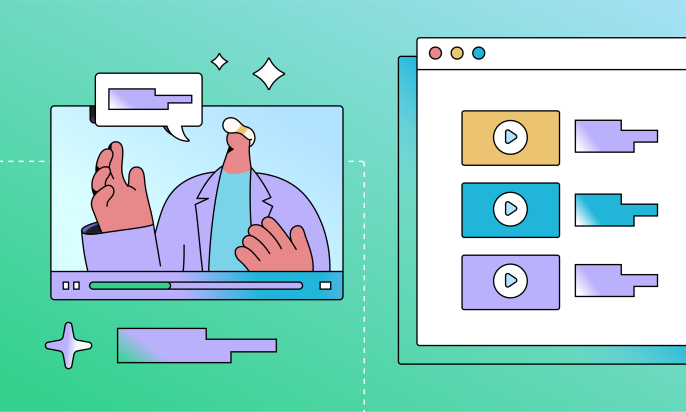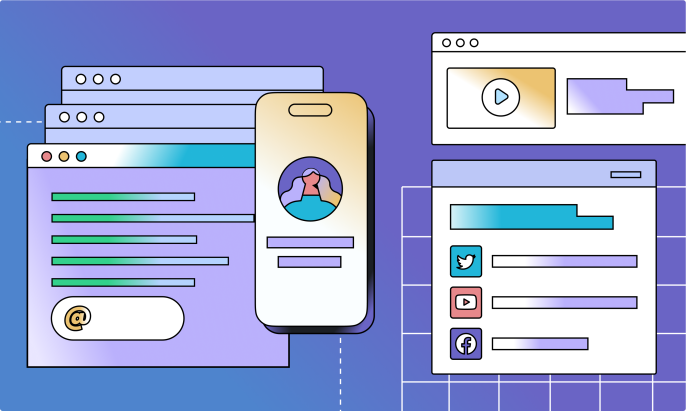As you grow your company, you’ve probably noticed that it’s hard to get more new customers.
Your traditional business-to-business (B2B) growth strategy of prospecting sales isn't as easy to use at it might've been 10 years ago.
Winning in B2B growth today requires a focus on building awareness and demand. You need to put your product front and center, building your growth strategy around the value it gives its users. Keep reading to learn how to turn your business into a powerful product-led company.
What is product-led growth?
Product-led growth (PLG) centers your marketing strategy around the product experience. This means that the product itself drives user acquisition, growth, conversion, and retention. PLG is an approach that has been gaining popularity, especially in the B2B software-as-a-service (SaaS) industry.
It places the product experience at the center of your marketing efforts. For example, if you offer a freemium product, that product is your sales and marketing tool, pulling in new users without needing costly ad campaigns. Your aim is to show enough value to entice users to upgrade to the paid version.
Product-led growth vs sales-led growth
A 2022 study found that 91 percent of SaaS companies plan to invest more into PLG this year. Almost half plan to double their investment. While sales-led growth has its value, a model that uses one-to-one human support is hard to scale.
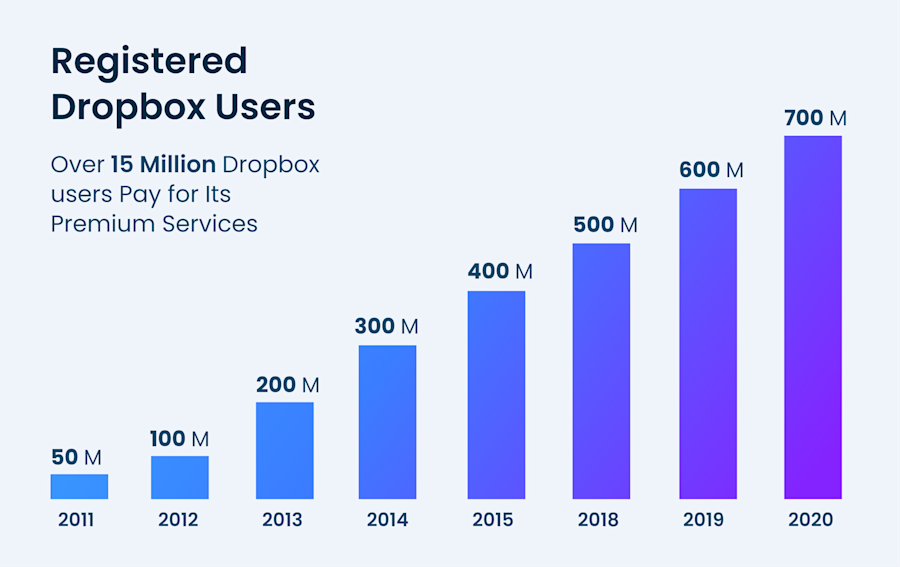
However, sales-led models do have an easier time walking new users through your product. You get to show them how to best use your app, making them more likely to keep using it.
Sales reps and customer success teams are also better at building relationships with enterprise-level organizations. Since enterprises use more advanced programs that take more expertise to set up, a sales-led model reduces the friction for enterprises to convert.
Product-led growth marketing strategies automate key onboarding, support, sales, and marketing tasks to streamline your growth model. Customers can easily work through these tasks once they have the app.
This encourages people to download and try out your app, since they don't need to commit money. And, with this wider top to your sales funnel, you can bring more people along the customer journey to buying your app.
Your customer acquisition cost (CAC), or the cost of getting each new user, is also much lower with PLG than with a sales-led model, since you don't need to keep up with the rising costs of all the different marketing channels.
You also have a higher customer retention rate, since users discover your product's value for themselves. Once they have that "aha" moment, they'll use your product for a long time.
Explaining the product-led growth flywheel
A flywheel is a cycle of processes that feed into one another, each helping improve the next so that you keep doing better overall.
In the PLG flywheel, you improve the customers' journey to drive engagement and user acquisition. The information you get from new users then shores up future customer success.
Activate
In this stage, prospects are evaluators. They've just learned about your product, likely by word-of-mouth or through your marketing efforts, and are ready to see if it's worth it. They want to know that you understand their problem and can pave the way to solving it.
This is their "aha" moment.
You need to give evaluators an easy path to their first moment of success. Don't waste time with advanced tutorials or skills — they'll dig into that after they've activated. For now, focus on solving their initial problem.
A user has passed the activation point once they've understood your product's value and they want to learn more about it. They'll put the time and money into finding out more because they realize it can improve their lives.
To improve your activation step, figure out the actions users have taken that made them realize your app's value. You can learn this from user testing, customer interviews, and analytics data.
Then, you have to maximize these activation events. Let new users reach them as fast as possible and they'll activate before they can think of trying a different product.
Adopt
Now, users are beginners. Excited about your product, they explore more of its features. They haven't paid for anything yet, but they're not opposed to doing so.
You can identify beginners when they show signs of commitment. They start using your product for more than their initial problem, trying to use it in their workflow and discovering new benefits. Soon enough, they'll want to pay money to get more out of it.
Beginners need support like guidance, tours, and tips so they can learn how to use your product for anything. They'll become more curious about its capabilities as they explore the range of its applications. Eventually, they adopt your product as it becomes part of their routine.
Full adoption makes users form habits around your app. Think about how you might default to sending a work message on Slack instead of by email or another form of communication.
After adoption, users depend on your product regularly.
Adore
After they've adopted your product, users become regulars. These people are the core of your user base. Your app has become their default option for many tasks they do often. Leadfeeder users, for example, now use it to collect accurate visitor data for all their lead generation tasks.
These people are less likely to churn because of the time, money, and effort they've put into your product. This makes them eager to enjoy your app but also frustrated if there are issues or changes to the core ways they use it.
This means that you have to satisfy their desire to keep finding new ways the product can help them without ruining their current workflow. Some optimizations are welcome, but you have to be wary of going overboard.
If you want these users to adore your product, proactively deliver value.
Reminding users how important they are to you also helps you build a relationship with them. Offering special deals and exclusive looks at upcoming features keeps them excited about the product, and taking their advice shows that you value them.
Getting users to adore a product is a long process, though. Adoration means they love your product and actively want it to improve. Building it takes a consistent effort to show that users who invest in your product will get value back.
Advocate
At this stage, paying customers are loyal to your product, making them much less likely to churn or switch to another one. Their emotional connection with your product makes them actively invest in your success, so they recommend it to everyone around them without any prompting.
These existing customers take the least money to maintain. They rarely require customer assistance — and if they do, it's usually because they're pushing the limits of your product to find more value.
They also become a powerful marketing channel. In fact, that's why our partnership referrals have a conversion rate of 50 percent, easily outpacing other strategies within the Leadfeeder sales organization. These are the people who will wear your brand's t-shirt.
To encourage people to keep advocating for your product, show them you appreciate their support. Offer them merch, advanced guidance, and first dibs on beta versions or new features.
Advocates complete the PLG flywheel by bringing in new customers who you can restart the process with. And the data you gather from each step helps you improve every stage of the process, leading to sustained growth.
Product-led growth metrics to track
Revenue-focused marketing teams use metrics to ensure their PLG model's doing well. But picking the wrong metrics can lose you a lot of potential customers. These metrics are the most useful from our experience.
Time to value
Time to value (TTV) is the time it takes for a user to reach an activation event. Since you hook a user once they have their first "aha" moment, it's vital to help them reach it as quickly as possible.
If your product simply can't avoid having a long time to showcase its value, you should try to optimize the user onboarding experience around the key actions that lead to activation. That way, you give users a clear path to their activation event.
Product-qualified leads
Product-qualified leads (PQLs) are users in the adoption stage. These people are typically most receptive to your sales efforts, so identifying and converting them expands your paying user base. Increasing your PQLs also raises the number of users your sales team can convert.
Leadfeeder gives you more insight into your site visitors, helping you spot more PQLs based on the pages on your site that they visit.
Expansion revenue
Expansion revenue tracks the revenue you've generated from current users with upsells, cross-sells, and add-ons.
People often prioritize net new acquisitions over expansion revenue, but this is one of the most important markers for growth in SaaS. After all, it's over three times cheaper to build expansion revenue from existing customers than to find new customers.
Average revenue per user
The average revenue per user (ARPU) is a key indicator for growth and profitability. It tracks the average amount that each active user generates for a product.
Customer segmentation is vital to get the most value from your ARPU. For example, segmenting ARPU based on your pricing models tells you which customers and plans are the most profitable. Understanding user spending patterns helps monetize users.
Customer lifetime value
Customer lifetime value (CLV) tells you how much revenue you can expect to get from one customer throughout their relationship with the company.
There are two common ways to represent this:
Multiplying the annual recurring revenue of one customer with the average customer lifespan
Multiplying the average amount people pay per purchase and the average purchase frequency by the customer lifespan
Remember that this value has to account for customer churn, or else you might overestimate your customers' lifetime value.
To find your CLV, you should also consider relevant factors like customer retention costs, acquisition costs, and the lifetime value of any customer referrals. Segmenting customers according to behavior, like different numbers of purchases, also gives valuable insight.
Net churn rate
The net churn rate tells you how much revenue you lose from cancellations and account downgrades. This makes it a good estimate of your ability to retain customers.
The lower your churn rate, the fewer customers you lose, so you should aim to get it below zero. Leadfeeder gives you more insight into your visitors so you can improve your product's offerings to better address them.
Virality and network effects
Many SaaS companies harness viral and network effects to make their product popular. The idea behind these effects is to have everyone in a space discuss your product so that people who are unfamiliar feel left out.
It's important to note that virality is just a growth tool that gets your product more exposure. In contrast, network effects make a platform more valuable as more users join it. For example, as YouTube gains more users, more people upload videos to the platform, making it more enticing.
You can generate virality or network effects by harnessing your users in the advocate stage. These effects occur as they bring more awareness to your brand through word of mouth. You can also produce these effects with targeted marketing campaigns that include your advocates.
Product-led growth examples
Even though it is a burgeoning model, PLG companies have already had many major successes. Here are two product-led companies that are now dominant leaders in their fields.
SurveyMonkey
Since surveys are a product that many people see, it makes sense for SurveyMonkey to employ PLG to reach new users. Every survey requires a quick, frictionless login, turning respondents into users without any acquisition costs.
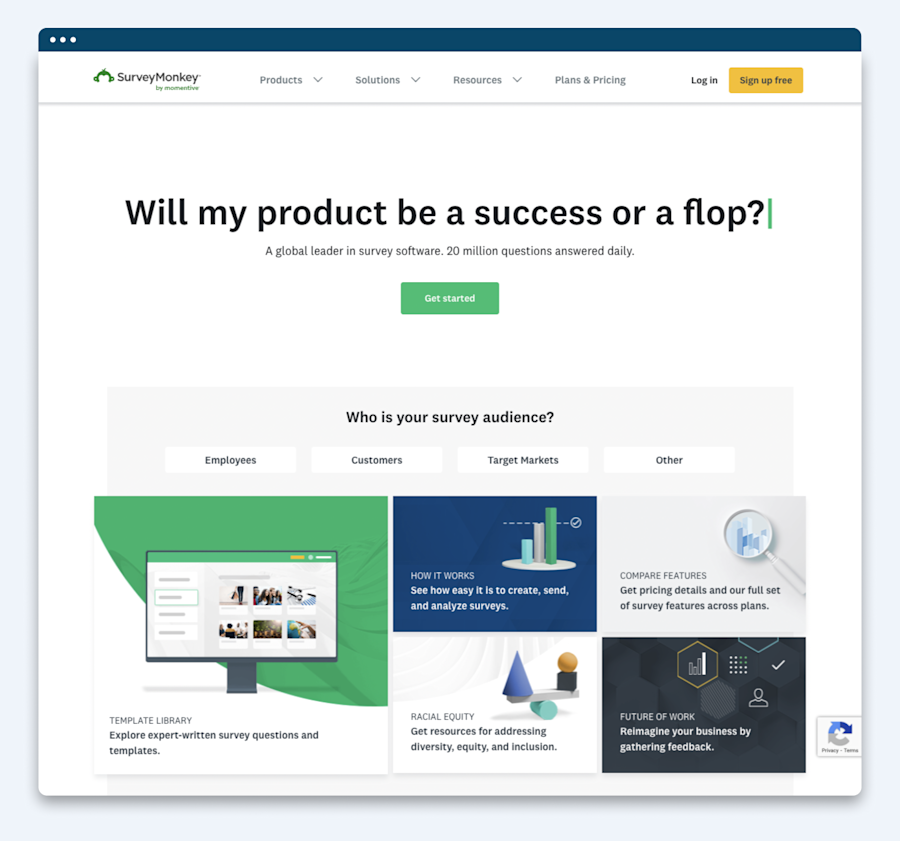
Each survey also includes the tag "Powered by SurveyMonkey," keeping the name in users' minds.
These simple tactics create a network effect, where users are more comfortable sending out SurveyMonkey surveys because they assume most other people are already users as well. This has contributed to its parent company's revenue of $121.4 million last quarter.
Dropbox
Dropbox started out as a free, easy way to share files. It had little success with traditional paid advertising, so instead the company posted a demo video to forums on Reddit and Digg. Overnight, their beta waiting list exploded from 5,000 to 75,000 signups.
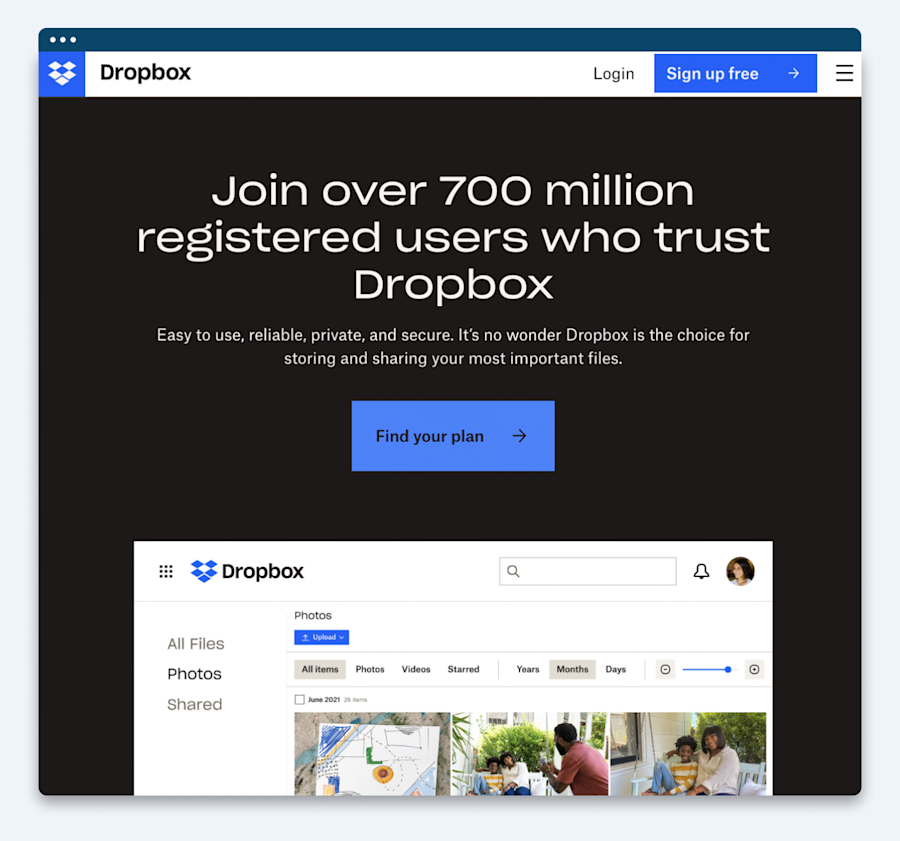
Since the company gained a user base due to the quality of its product, it continued to incentivize people sharing it for free. For example, it offered extra storage and gave people shareable links so they could send files to non-Dropbox users.
As a result, Dropbox now has over 700 million registered users, with more than 15 million paying for its premium services.
How to build a product-led growth strategy
The most common product-led growth strategy is the "freemium" model — giving users a free product with the option to upgrade it for more functionality. Your free version should let them accomplish most basic tasks they would use your product for.
The premium options can then provide extra value. For example, Grammarly's free option runs a basic grammar check but its premium option suggests advanced changes to give your writing an extra flair.
Even if you offer a free trial or another alternative to freemium, you can still optimize your pricing for PLG. Focus on:
Optimizing smaller contracts to build the biggest user base you can
Supporting small contracts so they can grow and compound in the long run
Pricing based on the value that customers perceive directly after or while using your product
Keep improving the user experience so people can more intuitively use your product. This cuts friction, raising your TTV.
Product-led growth can boost your company
As your company continues to expand, sales-led growth will feel less and less worth it. The cost of each new sales rep doesn't equate to the revenue they add.
That's why you should swap to a product-led growth strategy early, putting your product up front and center. Starting a flywheel is tough, but once it's underway you can keep expanding your user base while focusing on just making the product better for users at different stages.
Leadfeeder makes it easy to put together specific, custom feeds that give you detailed insight into visitors who come to your site, check out certain pages, or find you from ads or emails. This data helps you figure out what they want your product for.
A product that streamlines the users' path to getting what they want out of your product encourages people to keep using it and sharing it with their peers. You'll notice improvements in retention metrics like TTY, ARPU, and net churn rate as your product performs better.
Once you have a big enough user base of PQLs, a marketing campaign that focuses on virality and network effect signals capitalizes on and amplifies your new growth. As more people check out your product and your site, Leadfeeder can gather even more valuable data for growth.
Together, we'll help your company take off. Start your free Leadfeeder trial today to find out how much better your product can serve your customers.
Now that you're here
Leadfeeder is a tool that shows you companies that visit your website. Leadfeeder generates new leads, offers insight on your customers and can help you increase your marketing ROI.
If you liked this blog post, you'll probably love Leadfeeder, too.
Sign up

